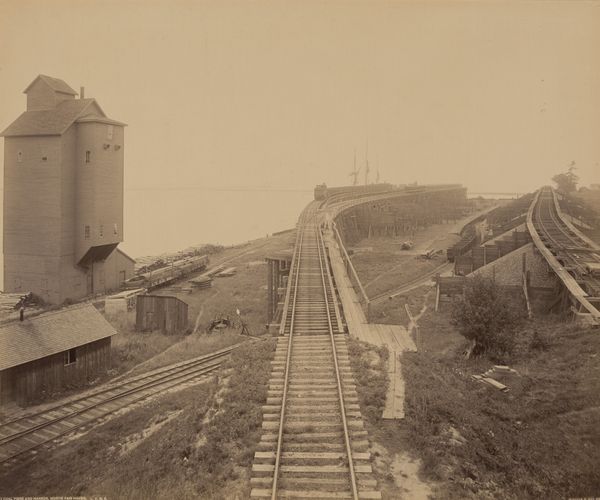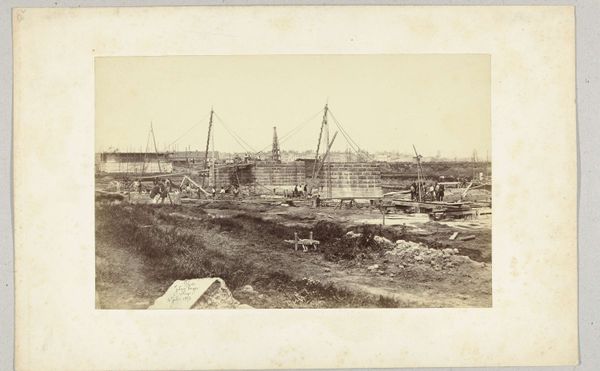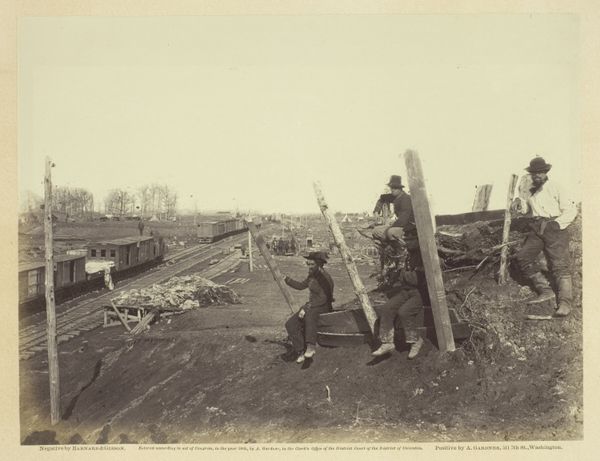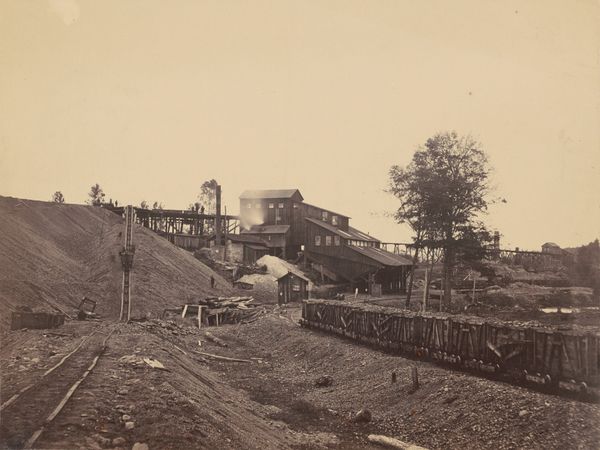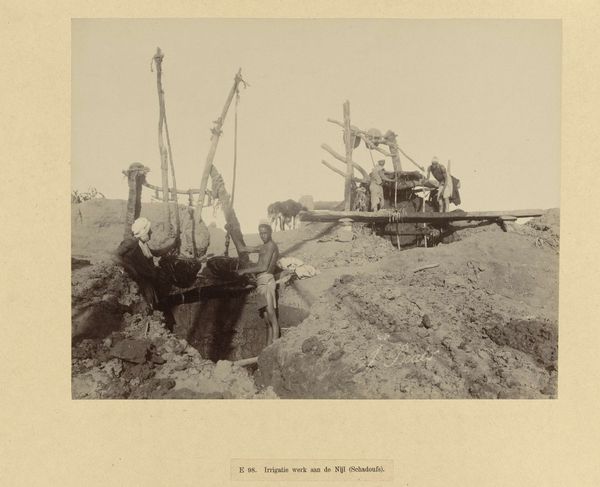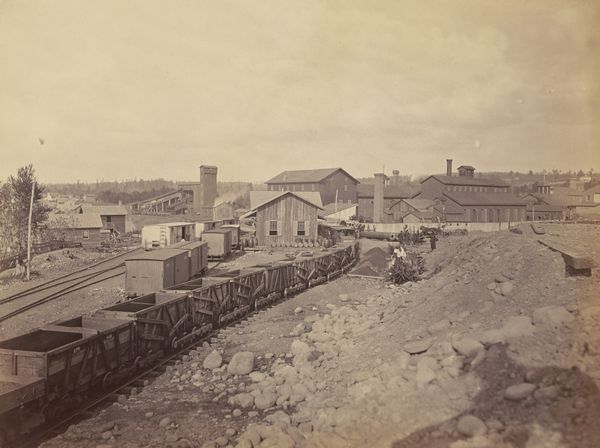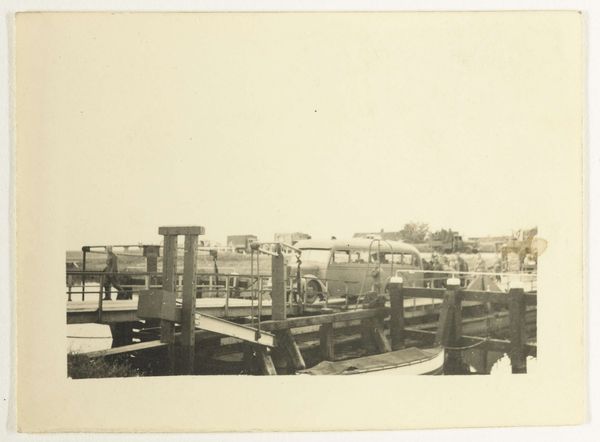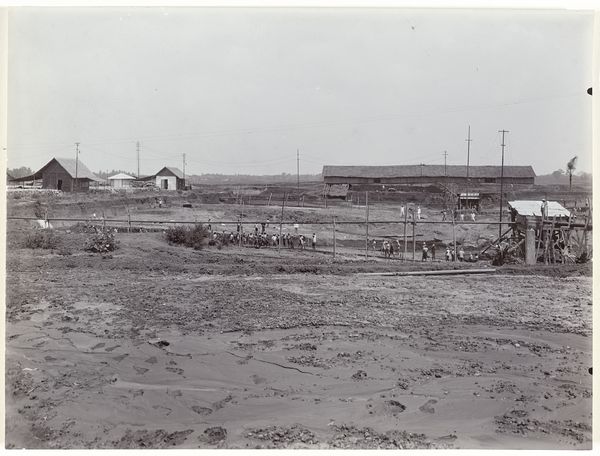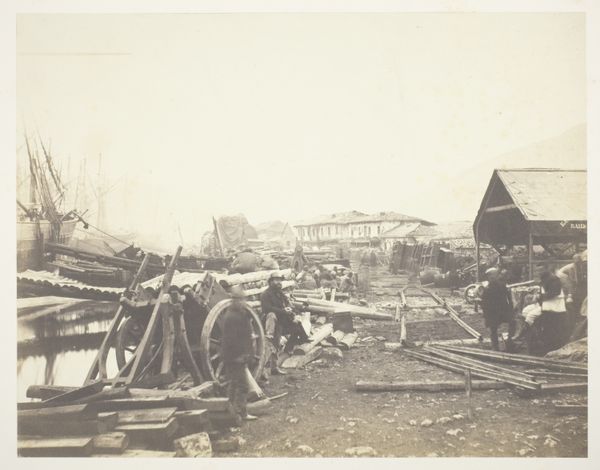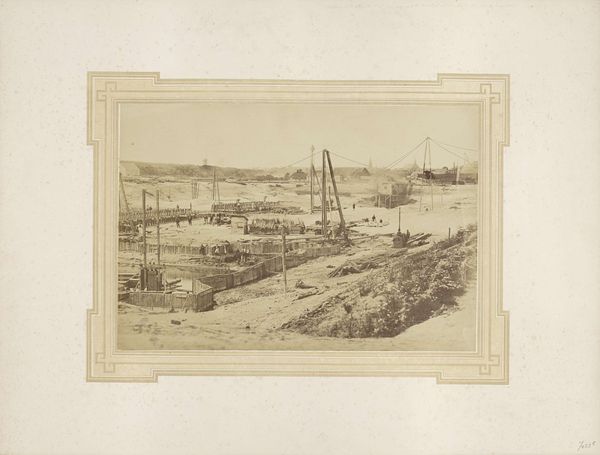
print, photography
#
16_19th-century
# print
#
war
#
landscape
#
photography
#
19th century
#
men
#
united-states
#
genre-painting
#
history-painting
Dimensions: 17.8 × 23 cm (image/paper); 31.2 × 44 cm (album page)
Copyright: Public Domain
Curator: Let’s consider this 1862 albumen print, “Ruins at Manassas Junction,” credited to Barnard & Gibson and housed right here at the Art Institute of Chicago. Editor: My first impression is bleak. The desaturated tones and broken infrastructure evoke a deep sense of loss. There’s a haunting emptiness within the composition despite the presence of human figures. Curator: Precisely. Beyond the emotional impact, observe the formal composition: The broken railroad bridge dominates the foreground, acting as a strong horizontal that guides the eye, contrasting with the vertical smokestacks in the distance. The linearity is quite powerful, especially when framed by this nearly monochrome palette. Editor: Absolutely. The placement of the figures near the train suggests a resumption of activity, perhaps even hope for rebuilding. This photograph represents the United States' Civil War and the socio-political issues, so, of course, that will speak to broader themes of recovery and national identity. Curator: Indeed. This image serves not only as a historical record of wartime destruction, but also offers a study in tonal gradation and depth of field. How the gradations render material texture— the rough-hewn timber of the bridge against the smoother surfaces of the railcars. Editor: From my perspective, understanding the institutional and social context is critical here. The photograph becomes a vital tool in shaping public perception and constructing a narrative around the war's consequences. Curator: Yes, and through its detailed materiality, we get a specific texture: the bridge not just a bridge, but a violated artifact of failed modernity. It asks if beauty can even emerge from such ruination. Editor: Looking closely, seeing that the photograph serves to not just document the war’s ruin but ultimately underscore the fragility of civilization itself. Curator: I'll concede that this photograph reveals that the interplay between aesthetic choices and the broader societal context generates the historical implications. Editor: It’s in understanding both how art is made, as well as how that work reflects broader power structures that any true meaning arises.
Comments
No comments
Be the first to comment and join the conversation on the ultimate creative platform.
